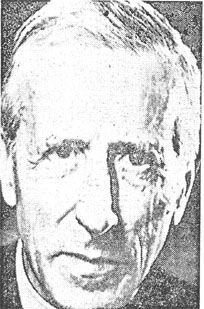Did theologian have a hand
in great 'missing link' hoax?
John M. Langone
America July 1980
[A7] A Harvard expert has linked theological Pierre Teilhard de Chardin to the most spectacular anthropological hoax of the 20th century-the promotion of Piltdown man as a "missing link."
But, says paleontologist Stephen Jay Gould, although the French Jesuit was involved in the fraud-in which a prankster buried an orang-utan's jaw and a skull from a medieval graveyard in a gravel pit in Piltdown, England-it was not for nefarious reasons.
"We must recast Piltdown as a joke that went too far, not as a malicious attempt to defraud," Gould writes in the current issue of Natural History magazine. "And what a wonderful joke for a Frenchman because England at the time boasted no human fossils at all, while France (with Neanderthal Man and Cro-Magnon Man) stood proudly as the queen of anthropology.
"What an irresistible idea-to salt the English soil with this preposterous combination of human skull and an ape's jaw and see what the pros could make of it. (But) any on Teilhard's part would surely have wrecked irrevocably the professional career he had desired so greatly, dared so little to hope for, and at whose threshold he now stood with so much promise."
For more than 40 years- Piltdown Man was discovered in 1912 - the "preposterous combination" fooled scientists into thinking that a missing link between modern. man and ape had been found.

In 1953, sophisticated scientific testing revealed that the jaw had been stained to make it appear old, and the teeth had been filed . Subsequent detective work pointed to Charles Dawson, a lawyer and amateur archaeologist who first brought the Piltdown specimens to the British Museum, as the culprit.
Dawson had befriended Teilhard shortly after the Frenchman enrolled in a seminary and the two were frequent correspondents.
Dr. Gould built his case against the Jesuit through correspondence between the priest and Kenneth Oakley, curator emeritus at the British Museum, who helped prove Piltdown a fraud, an interview with Oakley, and an examination of Teilhard's writings and correspondence.
One letter, he says, indicated that the priest and Dawson manufactured the fossil samples, and in another, Teilhard, realizing that he had tripped, began to temporize.
Dr. Gould also wonders why Teilhard who once described Piltdown Man work as "one of my brightest and earliest paleontological memories," barely mentioned it in his published writings.
While Teilhard may have been involved in the hoax, it in no way reflected on his subsequent work in anthropology-he helped discover authentic Peking Man fossils in China where he lived from 1922 to 1946-and on his theories about science and religion.
The priest, who died in 1955, believed that cosmic evolution and Christianity were united, and that humankind was evolving towards a final spiritual unity.
"My case is, to be sure, circumstantial (as is the case against Dawson)," says Gould, "but I believe that the burden of proof must now rest with those who would hold Father Teilhard blameless."